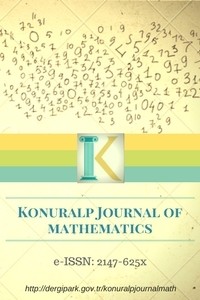Pure Extending Objects
In this paper we introduce two new concepts, namely, pure extending objects and $\mathcal{K}$-nonsingular objects and then, we prove that any pair of subisomorphic $\mathcal{K}$-nonsingular objects in a finitely accessible additive category with kernels $\mathcal{A}$ are isomorphic to each other if and only if for any object $Y$ and any pure extending $\mathcal{K}$-nonsingular object $X$, if $X$ and $Y$ are subisomorphic to each other then $X\cong Y$.
___
- [1] Adamek, J. and Rosicky, J., Locally presentable and accessible categories, Cambridge University Press, Cambridge, 1994.
- [2] Berktas¸, M. K., On pure Goldie dimensions, Comm. Algebra 45 (2017), 3334-3339.
- [3] Crivei, S. and Radu S. M., CS-Rickart and dual CS-Rickart objects in abelian categories, arxiv: 2007.11059v1
- [4] Crawley-Boevey, W., Locally finitely presented additive categories, Comm. Algebra 22 (1994), 1641-1674.
- [5] Dehghani, N. and Rizvi, S. T., When mutually subisomorphic Baer modules are isomorphic, arxiv: 1909.0344v1
- [6] Dung, N. V., Huynh, D. V., Smith, P. F. and Wisbauer, R., Extending modules, Longman, 1994.
- [7] Herzog, I., Pure injective envelopes, J. Algebra Appl. 4 (2003), 397–402.
- [8] Rizvi, S. T. and Roman, C. S., On K -nonsingular modules and applications, Comm. Algebra 35 (2007), 2960–2982.
- Yayın Aralığı: Yılda 2 Sayı
- Başlangıç: 2013
- Yayıncı: Mehmet Zeki SARIKAYA
